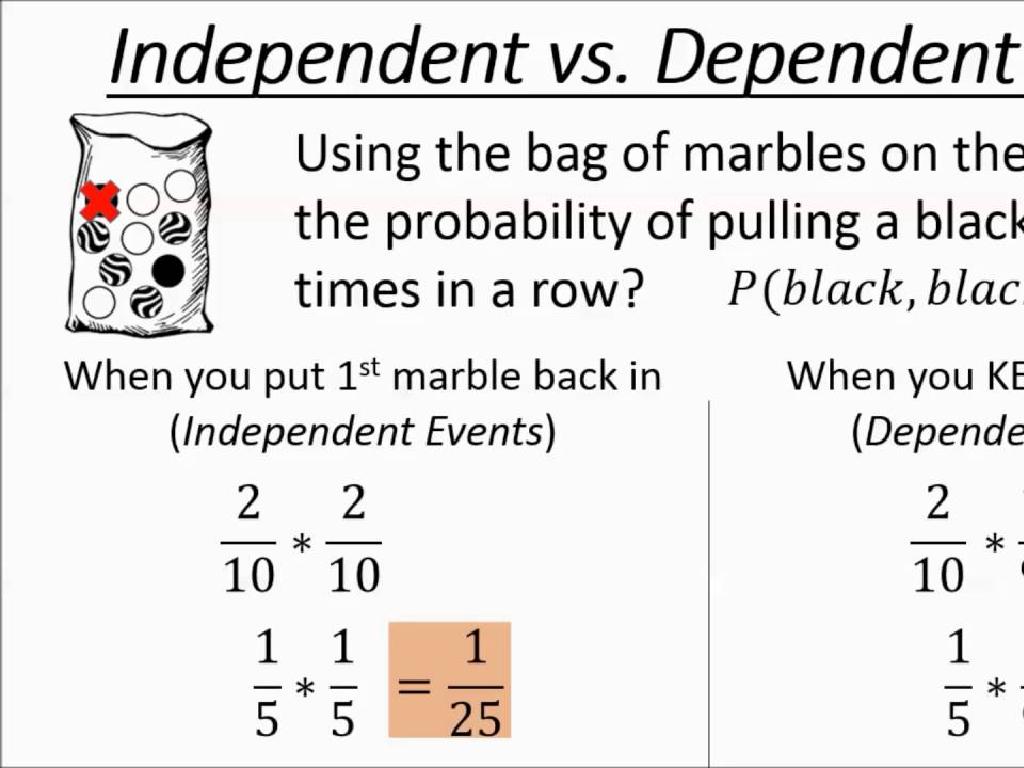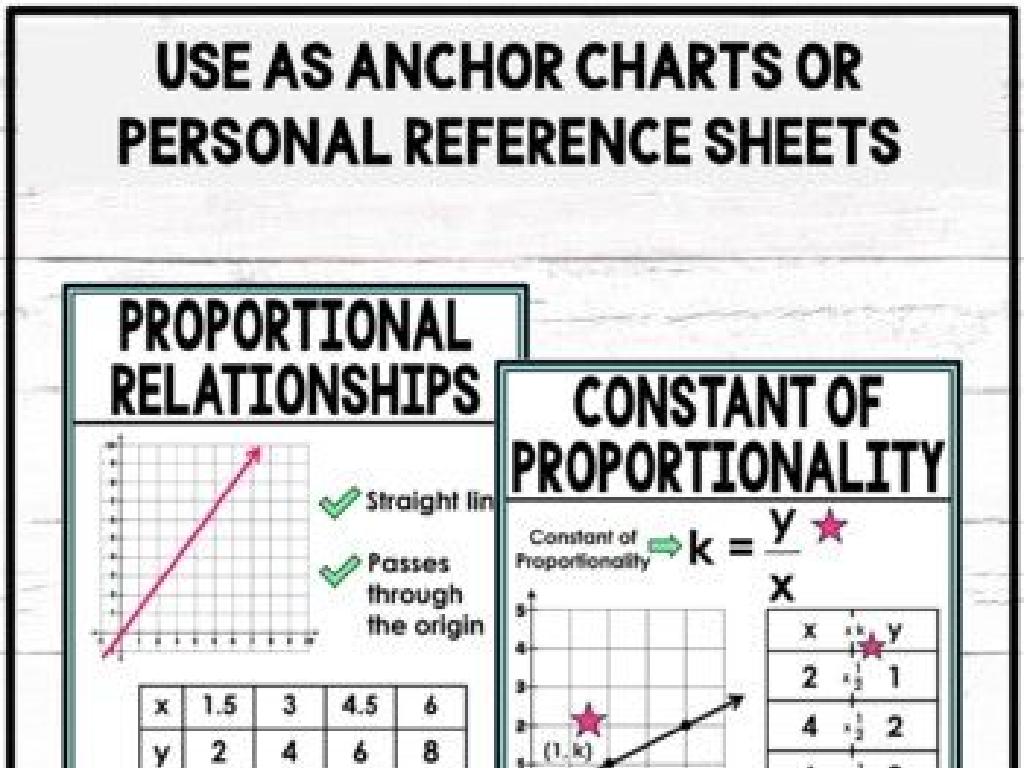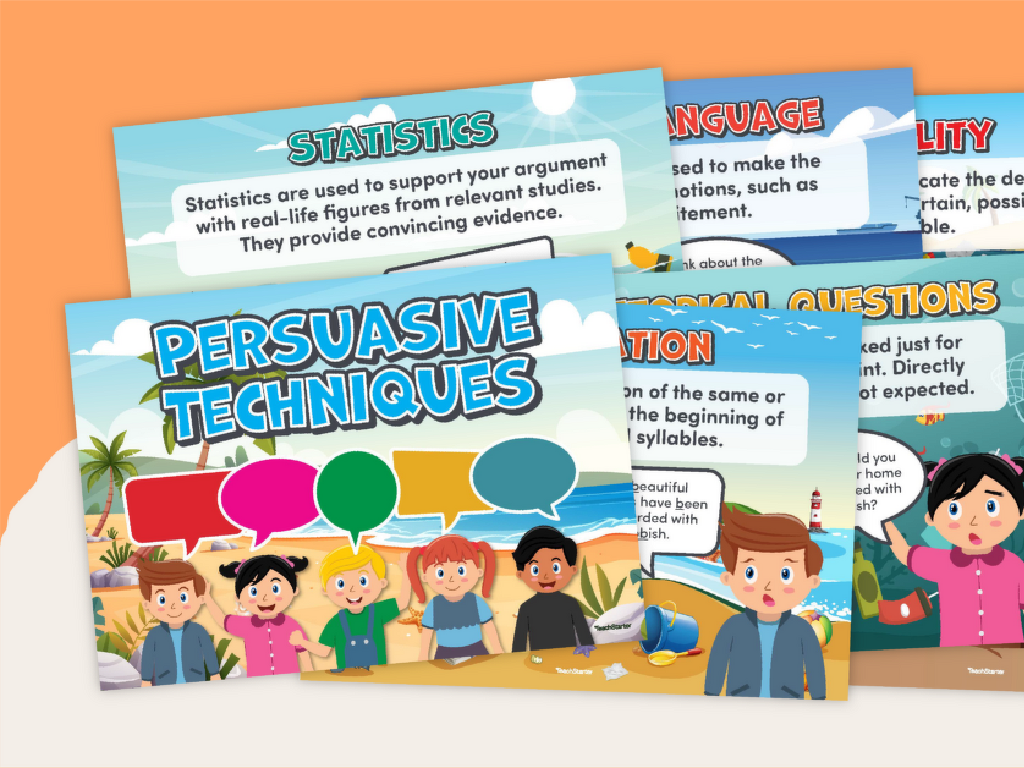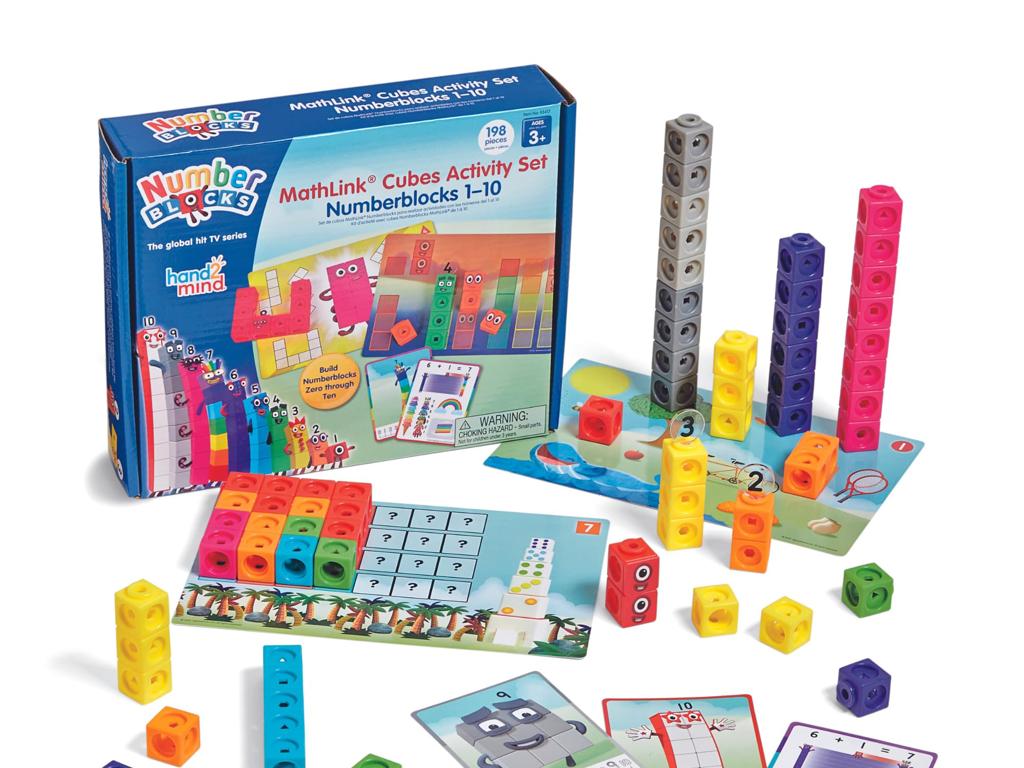Identify Fixed And Variable Expenses
Subject: Math
Grade: Fourth grade
Topic: Financial Literacy
Please LOG IN to download the presentation. Access is available to registered users only.
View More Content
Financial Literacy: Fixed vs. Variable Expenses
– What is Financial Literacy?
– Understanding how we use money
– Money is used for buying things we need, like food and clothes
– Today’s focus: Fixed Expenses
– Costs that do not change, like rent or a car payment
– Today’s focus: Variable Expenses
– Costs that can change, like eating out or gas money
|
This slide introduces the concept of financial literacy to fourth-grade students, emphasizing the understanding of money and its uses. Financial literacy is the ability to understand and effectively use various financial skills, including personal financial management, budgeting, and investing. The slide transitions to today’s focus on fixed and variable expenses, which are two fundamental types of costs in budgeting. Fixed expenses are consistent costs that do not vary from month to month, such as mortgage or insurance payments. Variable expenses, on the other hand, fluctuate and can change based on usage or consumption, such as utility bills or leisure activities. Encourage students to think of examples from their own lives or their family’s expenses to make the concept more relatable.
Understanding Expenses
– Definition of expenses
– Money spent on goods or services
– Common daily expenses
– Examples: food, toys, and books
– The need to track spending
– Helps manage money and save
– Fixed vs. variable expenses
– Fixed: rent; Variable: dining out
|
This slide introduces the concept of expenses to fourth-grade students, explaining that expenses are the money spent on goods or services. Provide relatable examples of everyday expenses such as food, toys, and books. Emphasize the importance of tracking expenses to manage money effectively and the potential to save for future goals. Discuss the difference between fixed expenses, which stay the same like rent or mortgage, and variable expenses, which can change from month to month, like dining out or movie tickets. Encourage students to think of examples from their own lives and consider why it might be helpful to know the difference between these types of expenses.
Understanding Fixed Expenses
– Fixed expenses stay the same
– Examples: Rent, School Fees
– Costs like your home rent or class fees
– Predictable monthly costs
– These costs don’t change, making planning easier
– Helps in budgeting
– Knowing these helps manage your money
|
This slide introduces the concept of fixed expenses to fourth-grade students, emphasizing their consistent nature. Fixed expenses are the costs that remain the same each month, such as rent or mortgage payments and school fees. These are predictable, which makes them easier to plan for when managing a budget. It’s important for students to understand that knowing their fixed expenses is crucial for financial planning. Encourage students to think of other examples of fixed expenses they may know from their own experiences, like a weekly allowance or a monthly subscription service.
Understanding Variable Expenses
– Variable expenses change monthly
– Examples: Electricity, Groceries
– Costs that differ, like a winter vs. summer power bill or different grocery lists
– Managing variable expenses
– Track spending and set limits for categories
– Strategies for budgeting
– Use tools like budget sheets or apps to plan
|
This slide aims to teach students about variable expenses, which are costs that do not have a fixed price and can vary each month. Examples include electricity bills, which may be higher in the winter due to heating costs, and grocery bills, which can change based on what items are needed each week. To manage these expenses, students should learn to track their spending and set limits for each category of expense. Introduce them to budgeting tools such as worksheets or financial apps designed for kids, which can help them plan their spending. Encourage students to think of other variable expenses they or their families might have and discuss ways to keep track of these costs.
Comparing Fixed and Variable Expenses
– Define fixed expenses
– Costs that do not change monthly, like rent or mortgage
– Define variable expenses
– Costs that can vary each month, like eating out or gas
– Planning for expenses
– Activity: Categorize a budget
– List your expenses and decide if they’re fixed or variable
|
This slide introduces students to the concept of fixed and variable expenses, which are key components of financial literacy. Fixed expenses are regular payments that don’t change from month to month, such as rent or insurance premiums. Variable expenses, on the other hand, fluctuate and can change based on usage or personal choices, like utility bills or entertainment. Understanding these concepts will help students learn how to plan and budget effectively. The activity involves students listing typical expenses they might be familiar with and categorizing them as fixed or variable, which will help reinforce the concepts taught. For the activity, provide examples like a monthly phone bill (fixed) versus money spent on movies (variable). Encourage students to think of their own examples and share with the class.
Class Activity: Sorting Expenses
– Sort expenses into fixed or variable
– Work in groups to categorize expenses
– Discuss why an expense is fixed or variable
– Is rent fixed or variable? How about money for snacks?
– Reflect on what we learned
|
This interactive class activity is designed to help students understand the concept of fixed and variable expenses through a hands-on sorting game. Divide the class into small groups and provide each group with a set of expense cards. Students will collaborate to categorize each expense as either fixed or variable. After sorting, lead a class discussion to explore the reasons behind each categorization, prompting students to explain their thinking. This will reinforce their understanding of the differences between fixed and variable expenses. Possible activities for different groups could include sorting household expenses, school-related expenses, or even hypothetical expenses for a planned event. The goal is for students to recognize patterns and reasoning in financial decision-making.
Applying Financial Literacy at Home
– Applying knowledge with family
– Create a simple family budget
– List income and expenses with parents
– Understand saving money’s value
– Learn why saving is important for future
– Discuss fixed vs. variable expenses
– Fixed expenses stay the same, variable expenses change
|
This slide aims to help students apply the concepts of fixed and variable expenses in a practical home setting. Encourage students to sit with their family and list all the income sources and regular expenses. They should categorize expenses into fixed (like rent or mortgage) and variable (like dining out or entertainment). Emphasize the importance of saving money by setting aside a portion of income regularly. Discuss how understanding the difference between fixed and variable expenses can help in making informed decisions about spending and saving. Provide examples such as saving for a new toy or a family trip to make the concept relatable. Encourage students to share their own family budgeting experiences in the next class.
Conclusion: Understanding Expenses
– Recap: Fixed vs. Variable Expenses
– Fixed expenses stay the same, like rent. Variable expenses change, like food costs.
– Importance of Financial Literacy
– Knowing about money helps us make smart choices in life.
– Your Questions Matter!
– Let’s Discuss and Learn Together
|
As we wrap up today’s lesson on fixed and variable expenses, it’s crucial to emphasize the importance of financial literacy in making informed decisions about money. Encourage students to ask any questions they have about the topic, fostering an open dialogue. Prepare to clarify any doubts and provide examples to ensure they grasp the concepts. Remember, the goal is to help students understand that managing expenses is a key skill for their future. Have a list of common questions ready in case students are shy to kickstart the Q&A session.
Homework Challenge: Tracking Expenses
– Record your family’s weekly expenses
– Determine if expenses are fixed or variable
– Fixed: rent, mortgage; Variable: groceries, dining out
– Reflect on what you learned
– Did any expenses surprise you? Why?
– Get ready to discuss in class
|
This homework assignment is designed to help students apply the concepts of fixed and variable expenses in a real-world context. By tracking their family’s spending for a week, students will learn to categorize expenses and understand the difference between costs that stay the same each month (fixed) and those that can change (variable). Encourage students to take note of patterns and any unexpected findings. In the next class, create a safe space for students to share their experiences and learn from each other. This activity will not only reinforce the lesson but also promote financial awareness from a young age.






